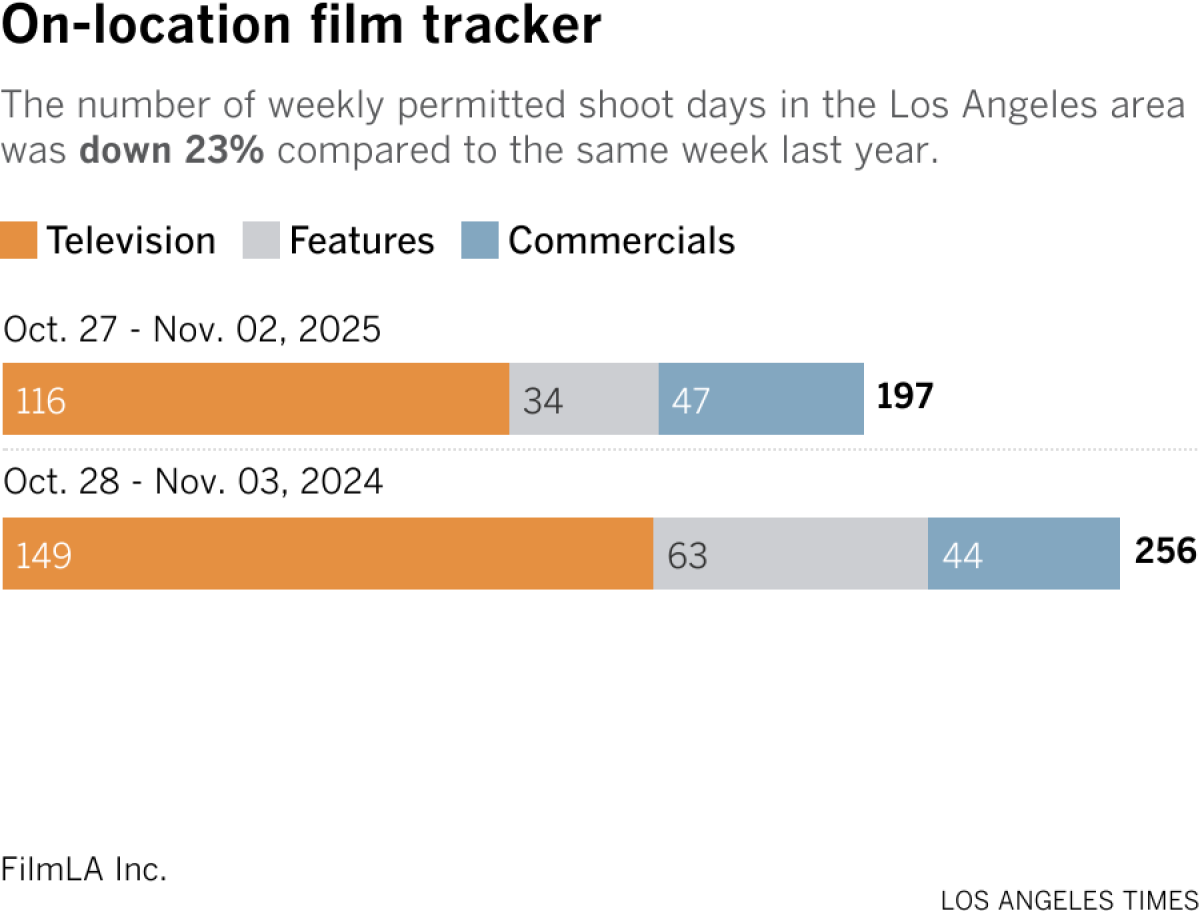What the steady drumbeat of layoffs means for Hollywood workers
The cuts in Hollywood just keep coming, following a sadly familiar script.
Last week it was Paramount, which laid off about 1,000 workers in the first wave of a deep staff reduction planned since tech scion David Ellison’s Skydance Media took over the storied media and entertainment company.
The cuts affected a wide swath of the company, from CBS and CBS News to Comedy Central, MTV and the historic Melrose Avenue film studio, my colleague Meg James and I reported. Another 1,000 layoffs are expected in the coming weeks.
But Paramount isn’t the only one in the media business that’s shedding jobs and payrolls.
Earlier, cable giant Charter Communications said it would lay off 1,200 people nationwide, as the company faces increased competition for its broadband internet packages. NBC News, too, laid off 150 employees last month amid declining TV ratings and lessening ad revenue.
Other recent media-adjacent layoffs included 100 cuts to Disneyland Resort’s Anaheim-based workforce and the massive 14,000 worker reduction at Amazon, including at the company’s gaming and film and TV studios.
And that doesn’t even include widespread job losses that happened earlier this year at companies such as Walt Disney Co., Warner Bros. Discovery, NBCUniversal and Six Flags Entertainment Corp.
It all adds up to a grim picture for Hollywood’s workers, who have faced a near endless marathon of economic hurdles for the last five years.
First it was the pandemic, followed by the dual writers’ and actors’ strikes in 2023, cutbacks in spending after studios splurged on streaming productions, and the outflow of production to the U.K. and other countries with lower costs than California.
Then, in January, nature struck a blow, with the fires in Altadena and the Pacific Palisades destroying many industry workers’ homes.
Topping it off, Saturday marked the first day that millions of low-income Americans lost federal food assistance due to the government shutdown that began Oct. 1. That has affected some 5.5 million Californians and probably some who work in the entertainment industry.
“It’s been one crisis after another, without enough time in between,” said Keith McNutt, western regional executive director of the Entertainment Community Fund, which provides social services for arts and entertainment professionals. “People are concerned and very worried and really trying very hard to figure out where they go from here.”
McNutt reports that the nonprofit group has already heard from some people who were recently laid off, and has experienced a sharp increase in demand for its services, particularly from those in the film and TV industry. The fund offers healthcare and financial counseling and operates a career center. It also provides emergency grants for those who qualify.
Clients include not only low-income people who are always hit hardest in downturns, but also veteran entertainment industry professionals who’ve worked in the business for 20 to 30 years.
Those who were lucky enough to have savings saw those wiped out by the pandemic, and then were unable to replenish their rainy-day funds after the strikes and industry contraction, said David Rambo, chair of the fund’s western council.
“It has been snowballing very slowly for about five years,” Rambo said.
Many in the industry are hopeful that California’s newly expanded film and television tax credit program will bring some production — and jobs — back to the Golden State. That’s what backers campaigned on when they lobbied Sacramento legislators to bolster the program. Dozens of TV shows and films have received credits so far under the revamped program, but it’ll take some time to see the results in filming data and employment numbers.
And that doesn’t help the workers who were just laid off last month. For those folks, McNutt suggests calling the fund’s health insurance team to make sure they understand their options and also to spend some time with career counselors to understand how Hollywood skills can be transferable to other employers, whether that’s on a short- or long-term basis. Most importantly, don’t isolate yourself.
“You’re not alone,” he said. “Nobody’s alone in this situation that the industry is finding itself in right now, and so reach out to your friends, reach out to your colleagues. If you’re not comfortable with that, reach out to the Entertainment Community Fund.”
Stuff We Wrote
Film shoots

Number of the week

The Los Angeles Dodgers’ wild 11-inning win on Saturday over the Toronto Blue Jays notched nearly 26 million viewers, making it the most-watched World Series game since 2017, according to Nielsen data.
The 2017 Game 7 win by the Houston Astros over the Dodgers had an audience of 28.3 million.
The Dodgers are now the first Major League Baseball team to win back-to-back championships in 25 years. On Monday, thousands of Dodgers faithful turned out for the team’s victory parade through downtown L.A.
Finally …
You’ve no doubt heard of L.A.’s famous star tours. But what about a tour of a historic cemetery?
My colleague, Cerys Davies, wrote about local historian and guide Shmuel Gonzales — or as he calls himself, “Barrio Boychik” — and his walking tour of Boyle Heights’ Evergreen Cemetery.
The cemetery is the final resting place for many of L.A.’s early movers and shakers, including the Lankershims and the Hollenbecks, and it’s also a prime example of L.A.’s multicultural history.
